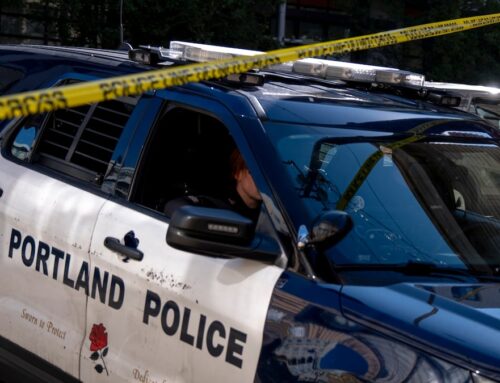Law enforcement can’t detect cannabis use on the road, researchers hope to change that
January 16, 2025
Cannabis has been legalized in some form across 38 states, but law enforcement still don’t have a reliable way to test for cannabis use on the road.
For the past year, a team of researchers at the University of Colorado Boulder has been trying to solve this issue by developing research on a breathalyzer for the psychoactive drug.
Cinnamon Bidwell is the co-director of CUChange, a research center focused on finding links between psychological and neurocognitive activity and positive and negative health decisions. She and her team have been studying if THC, the intoxicating compound found in cannabis, can be detected through breath.
“We’re working together on this project to try to collect reliable data to determine if you can detect cannabinoids (chemical components of cannabis) in breath, if there’s reliable, detectable variation after recent use and kind of how long any of that variation might last after use,” Bidwell said.
She said it’s difficult to detect THC on the road due to how cannabis is metabolized.
“With alcohol, we have really clear and tight correlations between the amount of alcohol somebody’s consumed and the amount that we can detect in their breath or in their blood,” Bidwell said. “Cannabis is used and metabolized so differently across different people, body weight and experience. This can make a big difference in terms of how blood levels or breath levels correlate with impairment.
A survey from the University of Michigan found that cannabis is being used more frequently by older adults in Michigan, with more than 27% reporting they used the drug at least once in the past year. The survey also found 20% of the adult respondents said they had gotten behind the wheel after using a cannabis product.

Blace Carpenter
/
WCMU
Michigan State Police combines both operating under the influence of drugs (OUID) and liquor (OUIL) together in its annual report and reported 23,698 cases in 2023.
Mike Covarrubias is an officer for Central Michigan University Police and is a certified Drug Recognition Expert (DRE). DRE officers are trained to identify drivers who are impaired by drugs, but Covarrubias said the training could be costly and time-consuming.
“Not everybody can be a DRE, but the National Highway Traffic Safety Administration offers a program called ARIDE (Advanced Roadside Impaired Driving Enforcement),” Covarrubias said. “Officers will get a two-day class on the seven categories of drugs and they’ll get training on some of the non-standardized field sobriety tests.”
Officers who are not certified as a DRE can’t legally identify what drug a user is on but can determine if a driver is too unsafe to be on the road, according to Covarrubias.
Law enforcement in Michigan currently rely on field sobriety tests for suspected cannabis use. These series of physical tasks help police determine if a driver is too impaired, but it doesn’t determine if they have consumed cannabis.
Covarrubias said they have equipment and training that can help them determine a driver’s impairment but there isn’t a way to detect cannabis use quickly.
Bidwell said that her team is making progress with their research, but it could be a while before a reliable roadside test for cannabis use is developed.
Search
RECENT PRESS RELEASES
Related Post




